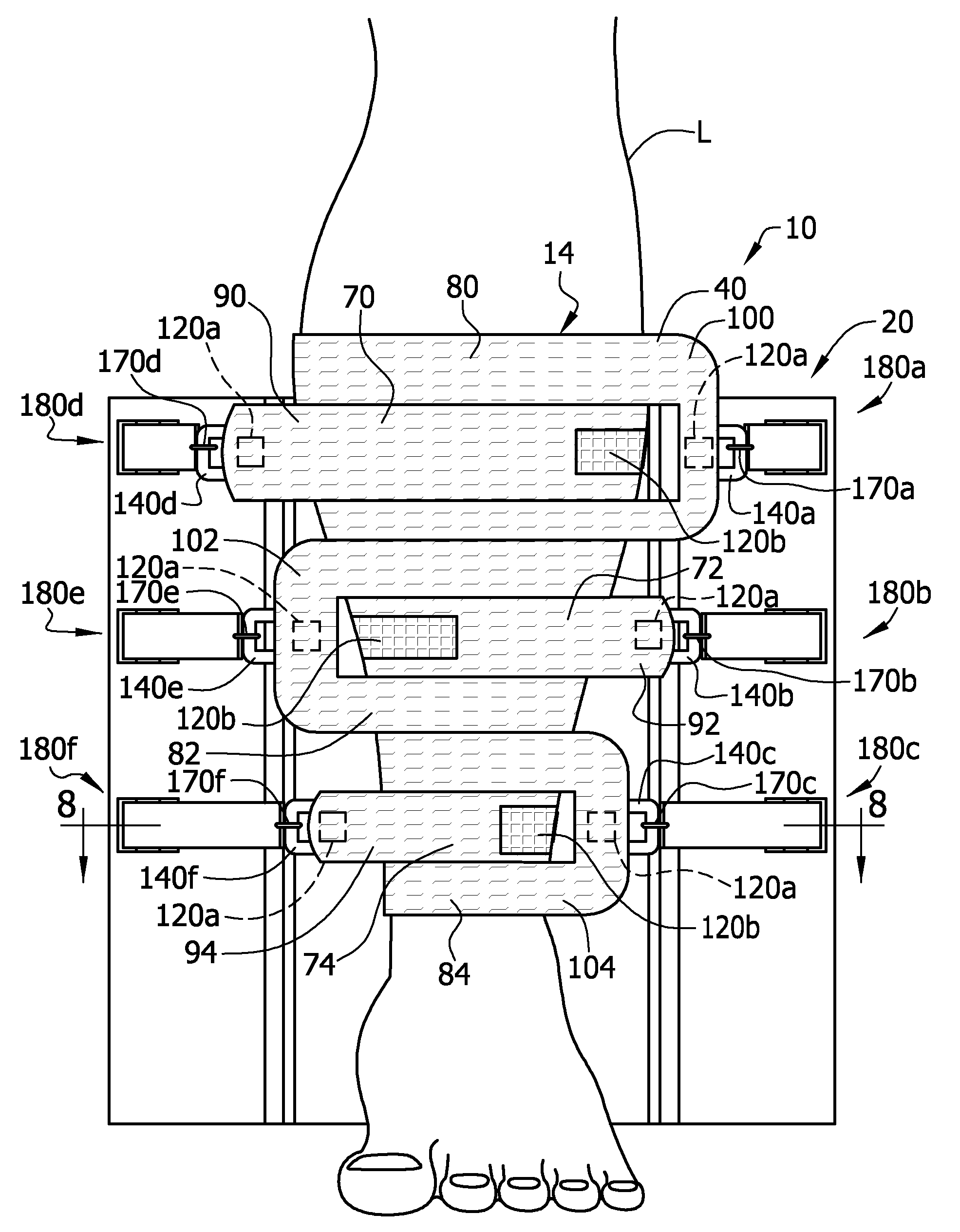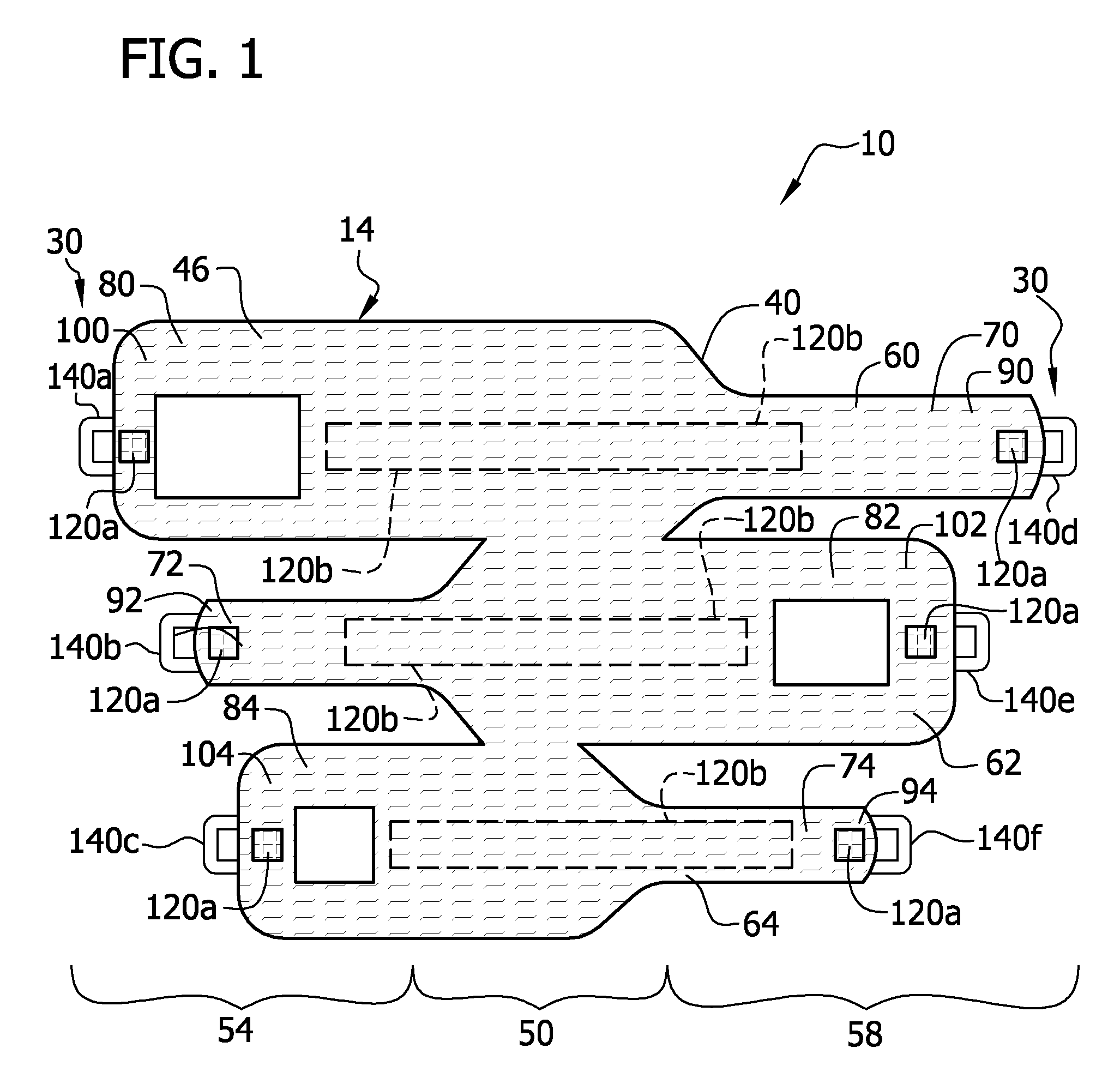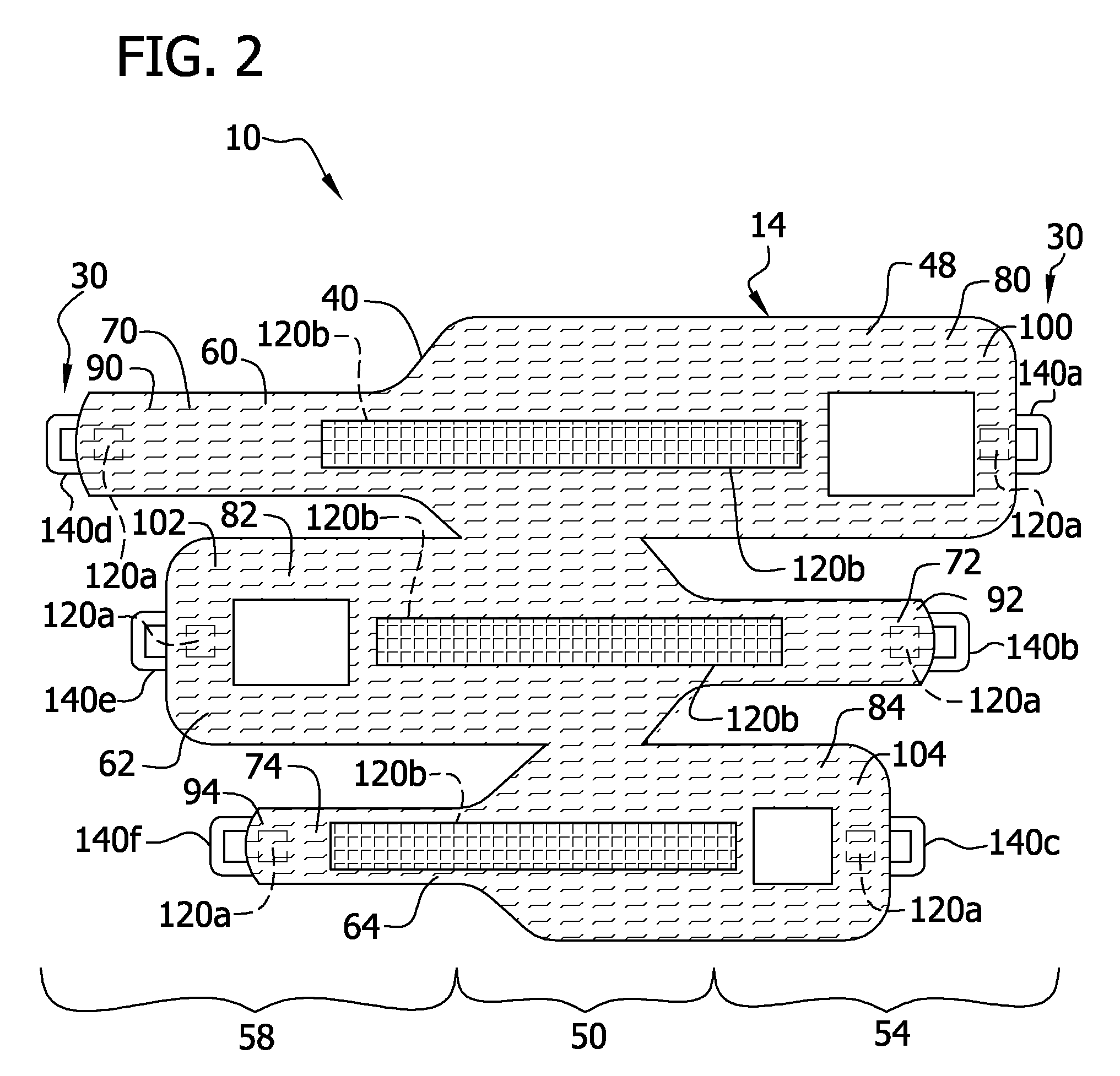Hybrid compression garmet
a compression garment and hybrid technology, applied in the field of compression garments, can solve the problems of high pressure in the veins of the lower leg, time-consuming and inconvenient repeated application and removal of active compression garments, and achieve the effect of increasing patient compliance and improving the effectiveness of compression therapy
- Summary
- Abstract
- Description
- Claims
- Application Information
AI Technical Summary
Benefits of technology
Problems solved by technology
Method used
Image
Examples
Embodiment Construction
[0026]Referring to the drawings, FIGS. 1 and 2 show a hybrid compression garment, generally designated 10. The garment 10 comprises a sleeve 14 that may be used to apply static and active compression to a limb L of a person. The sleeve 14 may be worn by a person while ambulatory or stationary for applying static compression. While the person is stationary, the sleeve 14 may be used to apply active compression to the limb L by connecting the sleeve 14 to a machine 20. As described in further detail below, the machine 20 is independent of the sleeve 14 and operable to transmit a force to the sleeve that constricts the sleeve without inflating the sleeve to apply active compression to the limb L. A connecting device 30 on the sleeve 14 is adapted for releasable connection of the sleeve to the machine 20 such that the sleeve can be used to apply active compression to the limb L. The connecting device 30 is also adapted for disconnection of the sleeve 14 from the machine 20 such that the...
PUM
| Property | Measurement | Unit |
|---|---|---|
| force | aaaaa | aaaaa |
| length | aaaaa | aaaaa |
| forces | aaaaa | aaaaa |
Abstract
Description
Claims
Application Information
 Login to View More
Login to View More - R&D
- Intellectual Property
- Life Sciences
- Materials
- Tech Scout
- Unparalleled Data Quality
- Higher Quality Content
- 60% Fewer Hallucinations
Browse by: Latest US Patents, China's latest patents, Technical Efficacy Thesaurus, Application Domain, Technology Topic, Popular Technical Reports.
© 2025 PatSnap. All rights reserved.Legal|Privacy policy|Modern Slavery Act Transparency Statement|Sitemap|About US| Contact US: help@patsnap.com



